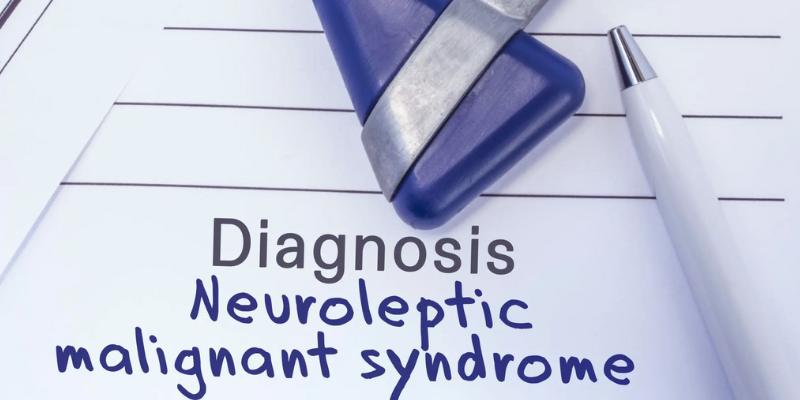How Multiple Sclerosis Is Diagnosed: Understanding the Process
Multiple sclerosis (MS) damages the spinal cord and brain. It compromises nerve protective covering, which causes different symptoms. These could include challenges with coordination, muscular weakness, and eyesight issues. Diagnosing MS takes time since symptoms can be like those of other diseases. Doctors confirm MS and rule out other disorders using several tests.
Not one test exists to identify MS. Doctors instead consider medical history, symptoms, and test findings. Early diagnosis is crucial for managing symptoms and preventing further nerve injuries. Though it can be difficult, the procedure aids in doctors giving the correct treatment. Knowing how MS is diagnosed would enable sufferers to feel more informed and ready about their illness.

What is Multiple Sclerosis?
Multiple sclerosis (MS) is a chronic autoimmune disease that damages the brain and spinal cord, among other central nervous system organs. The immune system wrongly attacks the myelin sheath, the protective layer surrounding nerve fibers. This injury causes a wide spectrum of symptoms by upsetting the seamless flow of impulses between the brain and the rest of the body. Individual differences abound in MS symptoms, which often fluctuate over time.
Typical symptoms include eye problems, muscular weakness, trouble with balance and coordination, numbness or tingling feelings, and cognitive difficulties, including memory loss and trouble focusing. Others might also have bladder problems, tiredness, or trouble speaking. Because MS is erratic, diagnosis is difficult. Symptoms could be similar to those of other neurological disorders, which causes diagnosis delay. But thanks to developments in medical imaging and diagnostic standards, clinicians can find MS sooner. Starting therapy and properly controlling symptoms depend on early diagnosis.
Recognizing Early Symptoms
Starting the MS diagnosis, doctors look for symptoms. Early symptoms could be minor or severe and might come and pass. Typical complaints are numbness, tingling, muscle weakness, poor vision, tiredness, and balance difficulties. Some also have mood swings, trouble focusing, or memory problems. Given that these symptoms are typical of many disorders, MS diagnosis may be difficult. To find symptom trends, doctors carefully go over a medical history. They probe past medical problems, family history, and any strange symptoms.
MS influences the nervous system; hence, doctors do a neurological examination to look for reflexes, muscular strength, coordination, and eye movement. Sometimes, symptoms aggravate with heat, stress, or tiredness, which makes diagnosis much more challenging. Doctors may notice changes over months or years as MS symptoms might go and then reappear over time. Beginning treatment and properly treating the disease depend on early detection. Monitoring symptoms will enable doctors to diagnose more precisely.

Diagnosing Multiple Sclerosis
Below are the key methods doctors use to diagnose multiple sclerosis, helping to confirm the condition and rule out other diseases.
The Role of MRI Scans
Among the most crucial instruments used in MS diagnosis is magnetic resonance imaging (MRI). It produces thorough pictures of the spinal cord and brain. These pictures enable clinicians to view MS-caused lesions or damaged areas. On the MRI scan, doctors seek for white spots or scars. These point to common MS nerve damage. Patients might need several MRI scans spread across time to monitor changes. If fresh lesions develop, it indicates that the disease is advancing. Though they last up to an hour, MRI scans are painless. Patients within the equipment have to remain motionless.
Spinal Fluid Analysis
Another MS test is a lumbar puncture, also known as a spinal tap. Doctors use a needle to sample cerebrospinal fluid from the lower back. The brain and spinal cord lie surrounded by this fluid. Physicians search the fluid for aberrant proteins and immune system activity. Finding certain proteins points to the immune system attacking the neurological system, which indicates MS. Although it is not always necessary, a spinal tap might assist in confirming the diagnosis in cases when other tests are unclear.
Evoked Potential Tests
Tests of evoked potential track brain response to electrical stimuli in speed. These tests enable clinicians to examine nerve function. MS slows down signal transmission by destroying the protective covering of nerves. There exist three different forms of evoked potential tests:
- Visual evoked potentials examine brain response to flashing lights.
- Auditory evoked potentials: Studies of sound signal path to the brain.
- Measurements of responses to tiny electrical pulses on the skin reveal somatosensory evoked potentials.
These painless tests reveal nerve damage even before symptoms start.
Blood Tests to Rule Out Other Conditions
Blood testing can rule out other diseases, as MS symptoms are similar to those of other diseases. Certain diseases, including lupus, vitamin B12 deficiency, and Lyme disease, can affect nerves. Blood tests look for viruses, immune system problems, and vitamin levels. They assist in guaranteeing the accurate diagnosis but do not confirm MS. This procedure helps doctors select the optimal treatment and helps to avoid misdiagnosis.
The McDonald Criteria for Diagnosing MS
The McDonald Criteria help doctors diagnose MS. These criteria assist in confirming MS based on MRI results, symptoms, and test findings. The criteria emphasize proof of injury in at least two central nervous system sites, evidence of multiple-time damage, and no other theory to explain symptoms. If one satisfies these criteria, doctors can identify MS. If not, additional tests are required to monitor developments over time.
Monitoring Symptoms Over Time
MS can not be identified immediately sometimes. Doctors could have to track symptoms for months or years. On MRI scans, they look for new lesions, declining nerve function, and fresh complaints. Patients should note symptoms and report any changes. Maintaining a symptom diary enables doctors to make more wise decisions. Early diagnosis results in higher quality of life and treatment.
Conclusion:
Determining multiple sclerosis requires carefully reviewing symptoms, medical background, and several tests. MRI scans, spinal fluid studies, evoked potential tests, and blood tests help doctors rule out other disorders, as no one test can confirm MS. The McDonald's Criteria support a correct diagnosis through consistency. Detecting illness development depends on tracking symptoms over time. Early diagnosis helps patients maintain a good quality of life by enabling improved management and therapy. Knowing the diagnostic procedure helps people get prompt medical attention and prepare to manage their illness properly.












